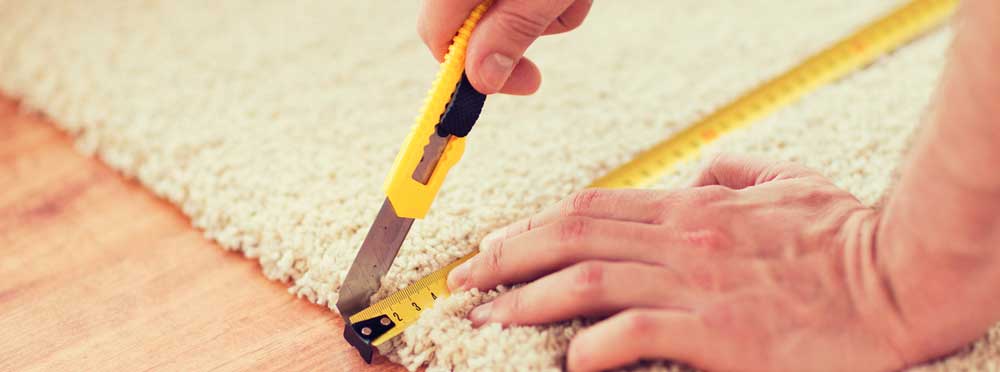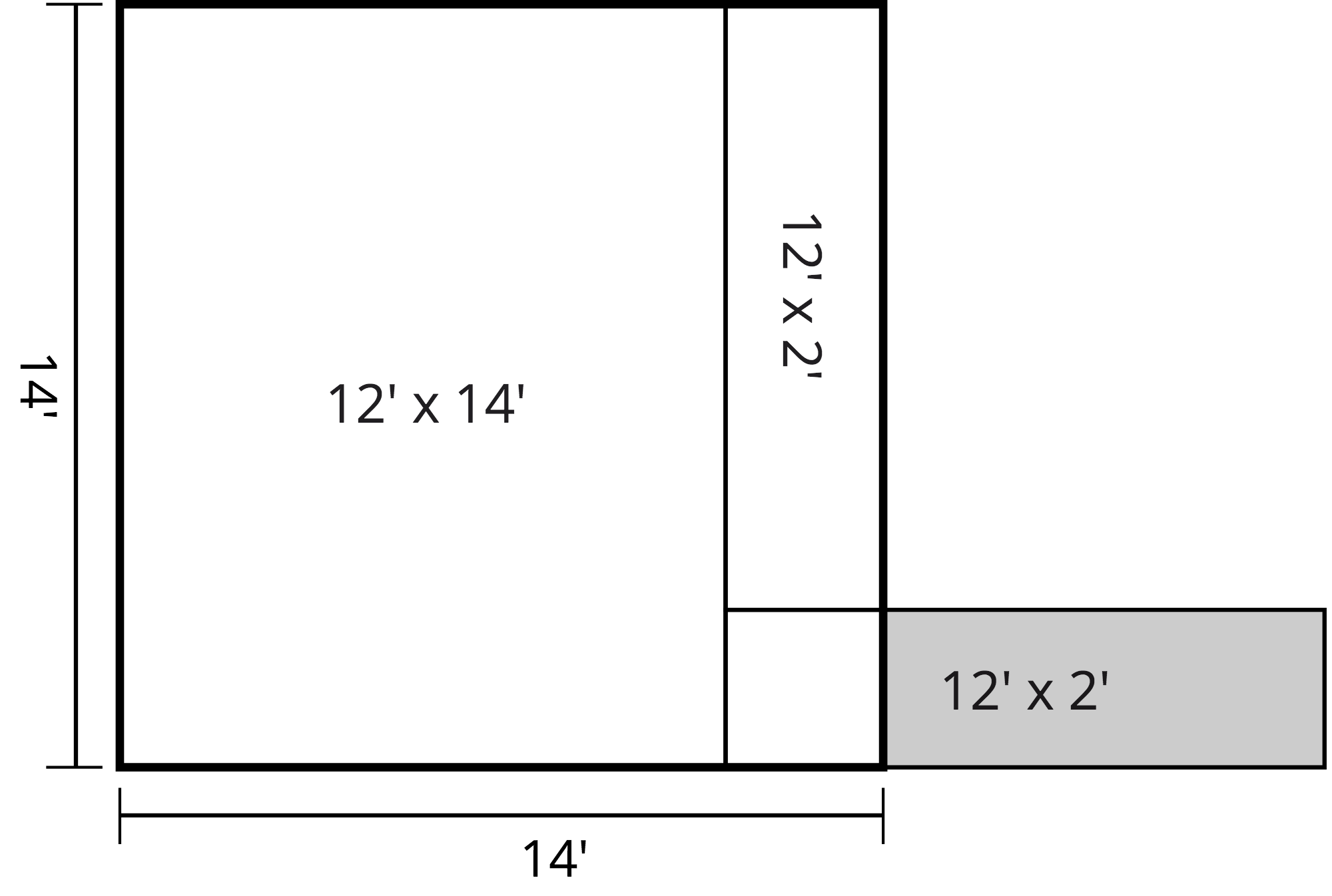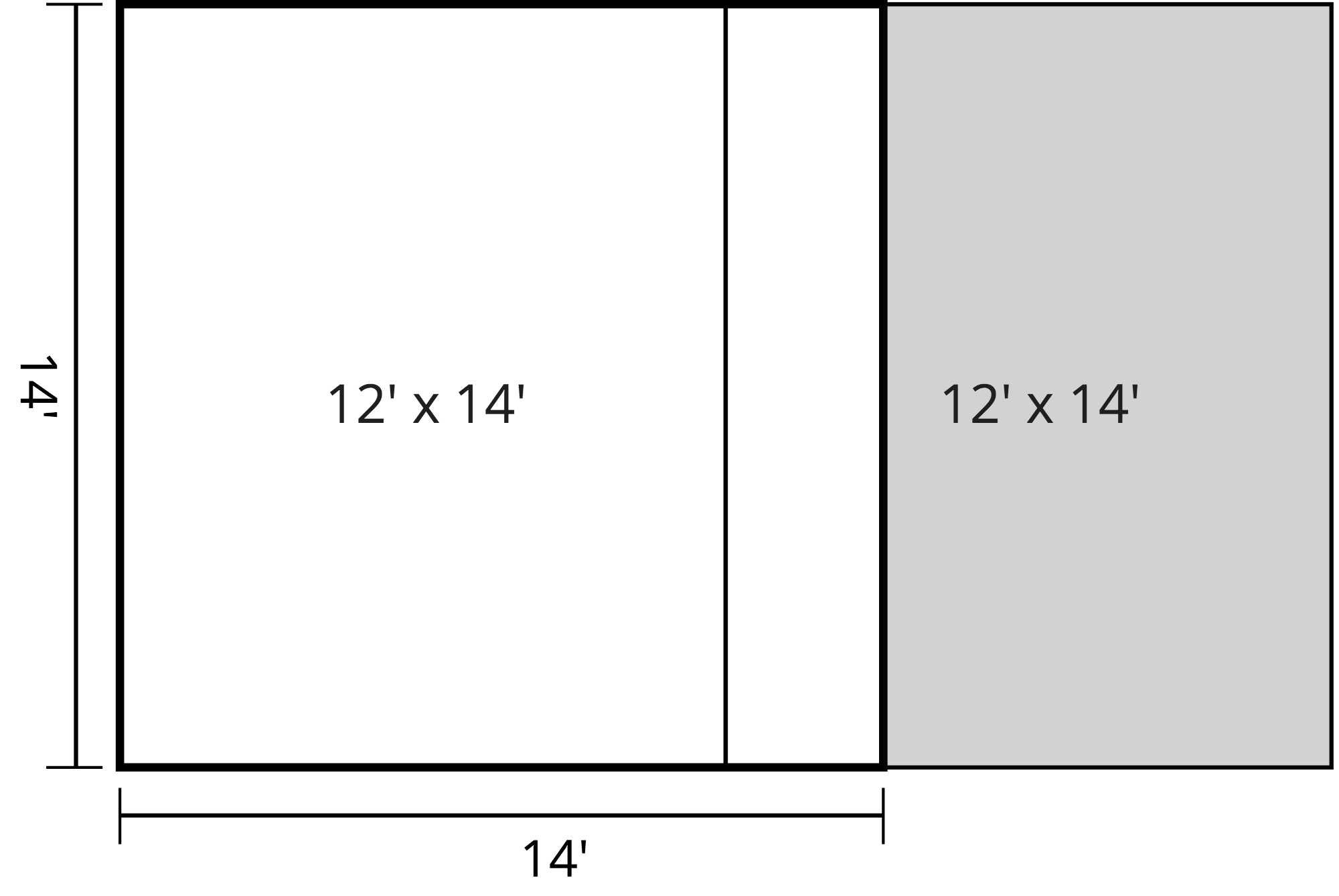Carpet Calculator and Price Estimator
To estimate carpeting quantity and cost, enter the dimensions of the area you want to cover. Optionally, estimate the cost of the carpet and padding you would like to use by adding the price.
Total Carpet Estimate:
Estimated Costs
| Carpet Cost: | $ |
| Padding Cost: | $ |
| Total Cost: | $ |
On this page:
How to Estimate Carpeting
Installing beautiful new carpet can add value and comfort to your home. Carpet comes in many types in varying levels of quality and cost.
New carpeting can represent a significant investment in your home. Installing it can also be challenging for DIYers to take on themselves. Compared to other flooring options, however, carpet adds exquisite warmth and sound cushioning to your home.
When planning any new flooring project, you will need to determine how much flooring you need. Stay tuned, we’ll show you how to easily estimate carpeting for your flooring project.
If you are considering an alternative flooring option, such as tile, try our tile calculator.

Step One: Measure the Room
The first step to any new flooring installation is to determine how large of an area you want to cover. It’s critical to measure the space accurately before ordering.
Most manufacturers sell carpet by the square yard, which is equal to 9 square feet. It will be easiest to measure your area in feet, then convert to square yards later.
As with any flooring material, it is important to measure accurately. Using a tape measure, measure the room wall-to-wall, not baseboard-to-baseboard, since baseboards are installed on top of your carpet.
If the floor plan is complex or there are multiple rooms, break the space up into smaller, regularly shaped sections. Measure each independently, and after you calculate the square footage of each, add them together to get the total amount for the area.
Visit our tutorial on how to measure irregular rooms to learn more.
If you need to measure in units other than feet, then you can use our length calculators to convert them to feet. In the next step, you’ll calculate the total area in square feet.
Step Two: Calculate Carpet and Padding Needed
Plug the total lengths and widths into the calculator above to find the quantity of carpet and pad required in square feet and square yards.
To do this calculation yourself, multiply the floor width by length in feet to get the square footage. If you measured multiple sections, do this for each one, then add the square footage of each section together to get the total square footage.
Then, to get the area in square yards, divide this by 9, since there are 9 square feet per square yard.
You can use our square yards calculator to calculate this too.
In our experience, it’s a good idea to order some additional material to account for cuts. If you want to order some additional, then you can multiply the result by 1.1 to add an extra 10%, for example. Use the result to estimate your cost by multiplying it by the carpet and padding cost per square yard.
Keep in mind that while carpet and padding are sold by the yard, some brands will offer the costs in square footage, as most people are generally aware of the rough square footage of a space. This enables the customer to get a rough estimate of costs.
However, because yards are larger, you may find that you need to order slightly more carpet in some cases, which makes getting your estimates in square yards more accurate than in square feet.
For example, let’s estimate flooring for a living room that is 12′ x 15′. You want to use carpeting that costs $54/sq yd and padding that costs $4.50/sq yd.
Find the total square footage to order:
12′ × 15′ × 1.1 (10% extra) = 198 sq ft
198 sq ft ÷ 9 = 22 sq yds
Calculate costs:
- Carpet: $54/sq yd × 22 sq yds = $1,188
- Padding: $4.50/sq yd × 22 sq yds = $99
- Total material cost: $1,188 + $99 = $1,287
How Much (More) Carpet Do I Need?
Unlike some other flooring materials, carpet comes in standard widths. The most common size is 12′ widths, but occasionally you can find widths of 13′ 6″ and 15′.
Usually, you must buy the entire width for as long a length as you need, no matter your room size. This can vary by supplier, though, with some suppliers selling partial rolls or remnants as well.
You need to take this into consideration when determining how much to buy. It is especially important when your room is wider than 12′.
Pattern and Nap in Different Directions
This example will show how to estimate carpet when the nap can be installed in a different direction. Ideally, the nap or the pattern of the carpet should all run in the same direction. Changing direction at a cut or at the end of a run may result in an unprofessional look, depending on the material used.
For example, if your room is 14′ x 14′, that is 196 sq ft. However, 12′ wide material will not cover the entire width. So, you will need to add extra length to get sufficient carpet for the extra width.
Depending on the pattern and nap type, you may want to use one 12′ x 14′ length of carpet and either a single 4′ x 12′ length or two 2′ x 12′ lengths, one on either side of the large section.

For most carpets, a single large piece and a single smaller piece will be enough, but if you have a repeating pattern, you may need to get additional carpet in order to make the pattern match up properly across the floor.
Pattern and Nap in the Same Direction
If you want the nap to run in the same direction or if the selected carpet has a pattern that you need to align at the seam, you would need TWO 12′ wide x 14′ long sections (336 sq ft) to cover a 14′ x 14′ room, nearly doubling the material you need to buy if the supplier does not allow partial rolls, cuts, or remnants.

Keep in mind that many sellers offer remnants, so you will not need to double your square footage each time.
However, style and pattern flooring can change the amount you need to order, and the waste can vary from 10% to 90%, depending on the room and carpet style, as well as by the carpet supplier and how they supply their carpeting.
If you are unsure, some suppliers will make the measurements and calculations for you, even if you plan on doing the installation yourself.
Carpeting is stretched tightly into place when it is installed. This can also sometimes lead to additional waste. Depending on where doorways are located and the shape of the room, this may change the direction the carpet is installed in.
Seams should not be located in the center of a doorway or in high-traffic areas.
How to Estimate Costs
Besides the carpet itself, nearly all carpets require padding underneath. Padding is sold in the same manner as carpet but is much less expensive. Padding ranges from 10 cents to 60 cents or more per square foot, or $0.90 to $5.40 a square yard.
Costs for carpet can vary widely from $9/sq yd ($1/sq ft) for apartment-grade material to over $90/sq yd ($10/sq ft) for luxury natural materials. To help you estimate your cost, you can optionally enter the cost of the carpet and/or the padding you want into the calculator above.
This will give you an estimate of the material costs for your project. For budgeting purposes, you can add $4.50 to $18 per sq yd ($0.50 to $2 per sq ft) to cover labor costs.
If you are installing your own carpet, you will need other materials (floor tape and tackless strip) and specialized tools (e.g., knee-kicker, power stretcher, and binder bars) as well. Usually, you can rent the necessary equipment.
Keep in mind that purchasing and renting these items will increase the cost of your DIY project. However, most people pay professionals to install their flooring since it’s a skilled job that usually takes professionals less than a day to complete.
You can find experienced carpet installers in your area here who will come to your house to discuss your project and provide you with free estimates. And soon, you will be on your way to enjoying your new floors!
Consult our carpet cost calculator and price guide to learn more about estimating the cost of flooring.


